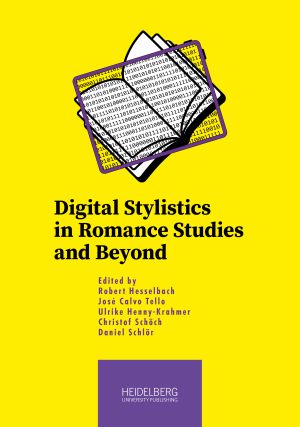How to Cite
License (Chapter)

This work is licensed under a Creative Commons Attribution-ShareAlike 4.0 International License.
Identifiers (Book)
Published
Machine Learning as a Measure of the Conceptual Looseness of Disordered Genres
Studies on German “Novellen”
Abstract This essay discusses how procedures of computational and literary genre stylistics can be built and implemented in order to reconstruct the ways in which disordered, heterogeneous, and historically discontinuous genres undergo historical change. The discussion consists of three parts. In the first part, I will introduce a distinction between classificatory and aesthetic interest and show that genre stylistics should in general be based on aesthetic interest. This is an argument against the common claim that genre concepts should be defined prior to historiographical work. The second part outlines the specific historical situation of the German Novelle as well as the basis of an aesthetic historiography of this disordered genre. The third part gives an operationalization of one fundamental task in computational and literary genre stylistics—namely, the psychological question of the extent to which historical readers were able to gain an understanding of different genres, based on texts that I grouped according to genre labels. This issue is processed here as a supervised learning task. With this method, low accuracy scores in classification tasks are usually interpreted as methodic flaws, and optimal accuracy scores are regarded as the criterion for adequate modeling. This essay argues, however, that if the question concerns the aesthetic history of disordered genres, then any adequate classification task based on supervised machine learning is expected to yield low accuracy scores. In the next step, the criterion of adequateness must therefore be revised so that low accuracy scores can be attributed to a specific genre itself and not to inappropriate selection of features, problematic parametrization, and other aspects of modeling. Finally, accuracy scores are not to be optimized, but they can be interpreted, in the case of disordered genres. Machine learning tasks can be integrated into a psychological framework so that accuracy scores can be interpreted as a measure of the semantic looseness of the concept of a specific genre within historical literary communities.
Keywords: supervised machine learning, German Novelle, computational and literary genre stylistics






